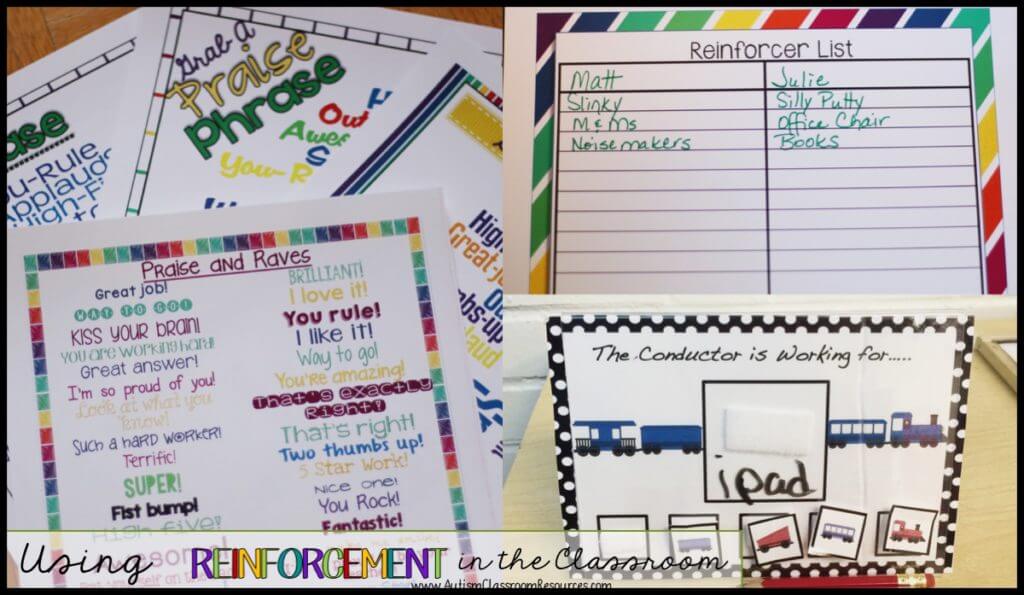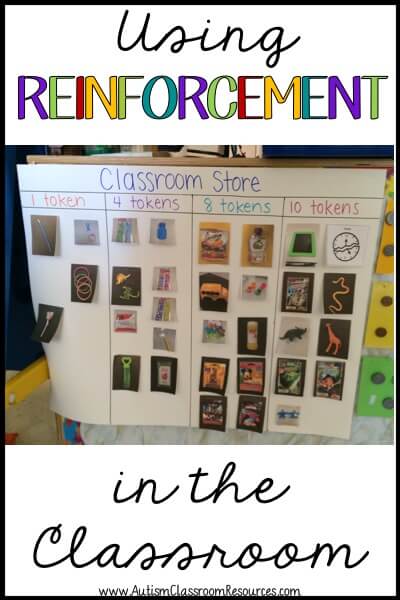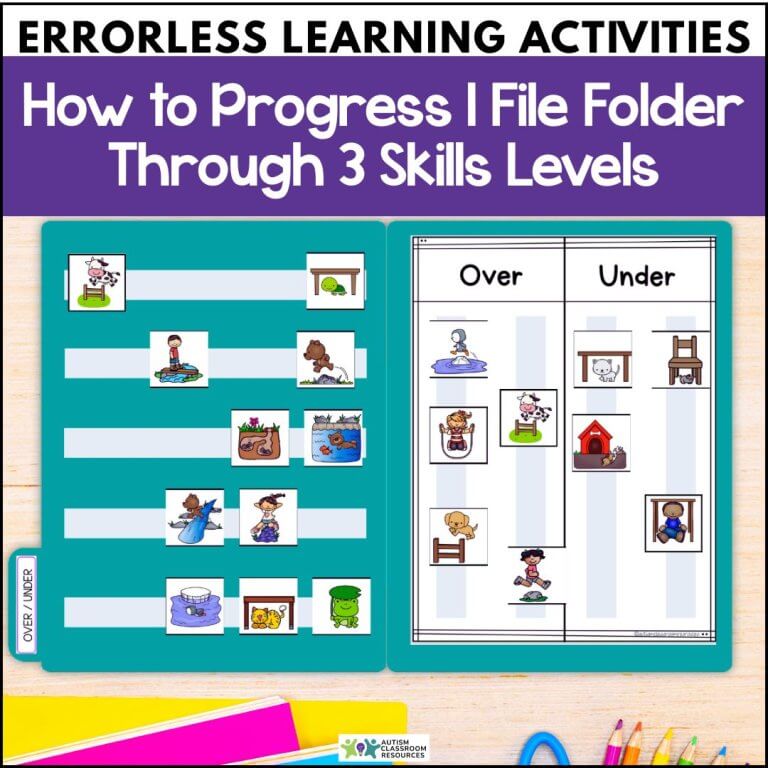 As we all know, individuals with autism are not always motivated by the same strategies as other students. Sometimes they are able to tell us what they prefer and sometimes we have to become detectives to figure it out. Recently I have been thinking about the powers of reinforcement and the many myths and misunderstandings about its use in the classroom. The TARGET: Texas Autism Resource Guide for Effective Teaching provides a good overall description of what reinforcement is and a list of research-based resources supporting its use with autism. Rather than focusing on everything about reinforcement, which is covered much better in other resources, I want to point out a few things to think about and provide some resources for identifying and using reinforcement in the classroom.
As we all know, individuals with autism are not always motivated by the same strategies as other students. Sometimes they are able to tell us what they prefer and sometimes we have to become detectives to figure it out. Recently I have been thinking about the powers of reinforcement and the many myths and misunderstandings about its use in the classroom. The TARGET: Texas Autism Resource Guide for Effective Teaching provides a good overall description of what reinforcement is and a list of research-based resources supporting its use with autism. Rather than focusing on everything about reinforcement, which is covered much better in other resources, I want to point out a few things to think about and provide some resources for identifying and using reinforcement in the classroom.1. Reinforce the behavior, not the student.
This is a critical point for a variety of reasons. First, it means that we need to identify ahead of time what specific behaviors we wish to increase. Then we need to provide the reinforcer immediately after that behavior. This means that if we are working on compliance, we can reinforce following our directions and working well. However unless our goal is only compliance, we need to identify the skill or behavior that we are trying to increase. What we don’t want to do is simply provide the reinforcer following a section of instruction in such a way that it may or may not be a correct response. This will lead to faulty learning for the student.
2. Reinforce every time for new skills.
For some students we can stretch our reinforcement by using token systems and praise and by randomizing our presentation of reinforcement as we thin the schedule of reinforcement. Remembering to thin the schedules of reinforcement over time as the student becomes more proficient is critical, but the error I see most often is spacing out the reinforcers too much and too fast so that the correct responding starts decreasing. If a student’s skill or behavior is not increasing, consider whether you are using enough reinforcement frequently enough.
3. Reinforcement is more than just the item.
How you sell the reinforcer is just as important as what the item or activity is. Choosing reinforcers that are more interesting and engaging when you are involved with them than when you are not is one way to increase your reinforcement value for the student’s behavior. Activities like bubbles for young children who need you to blow them or getting a manicure for an older student where you apply the polish are both examples of making the reinforcer an engaging experience that includes you. Pairing yourself with the reinforcer, regardless of what it is, by delivering praise first and offering “freebies” at other times when the student isn’t working with you are ways of increasing your reinforcement value. When you become a conditioned reinforcer, students will begin to move from more concrete reinforcement to more social reinforcement like praise and approval. For more ideas about making yourself reinforcing and discovering reinforcers for older students, see the ABA Therapists’ blog post: How To Make Yourself Reinforcing When Working With Children With Autism | ABA Therapists
4. If a behavior that the reinforcer follows does not increase, then the item or activity you are using is not a reinforcer.
By definition a reinforcer increases the frequency of the behavior that it follows. No matter how much the individual seems to love the item or activity, it can’t be a reinforcer if the behavior doesn’t increase. Because again we are reinforcing the behavior, not the student. Also, everyone’s reinforcers are different. Just because I love sushi and it might reinforce some behaviors in me (e.g., driving across town to get it), doesn’t mean it’s going to reinforce others’ behaviors. In fact, sushi is always my favorite example because it might just be punishing for some of people who can’t stand it.

5. There is a reinforcer (or hundreds) for everybody.
Frequently I hear teachers say that they can’t find a reinforcer for a child or that a child has no reinforcers. Everyone has items and activities in his or her daily life that serve as reinforcers. The trick is in trying to figure out what they are. For most of us, and most typical students, compliments and being told that we are doing good work are reinforcers. For most students as they get past preschool, good grades on their report cards are motivating and serve to reinforce correct responding.
Students with autism, however, are not always reinforced by the common things that we are. For some students in particular finding things that serve to increase behaviors is difficult. For those students there are a few things to try that can help solve the puzzle. One is to let the student wander a room alone and see what he chooses to do. The use that item or activity and see if it increases the behavior it follows. I once did this with a student in a preschool classroom. When we let him have the run of the room, he got a piece of tape from the teacher’s desk and turned it inside out with the sticky part on the outside. He then walked around the room playing with it. Then I took it from him and asked him to do simple tasks such as follow simple one-step directions (e.g., sit down). I prompted him the first time and followed it with giving back the tape. Then, we saw his compliance with basic commands increase during a short session of instruction. That night I went to the store and found lots of sticky toys that we could use in place of the tape. I did this because tape isn’t really an age-appropriate toy for a preschool student. The next day, we were able to increase his basic following of directions and imitation of basic gestures by following his correct responses with opportunities to play with sticky toys.
6. Reinforcers get old
No matter how much we like them or how much our students seem to like them now, reinforcer satiation can happen with anything. For instance, if I’m using food as a reinforcer and the student just ate lunch…chances are that the food will not work as well as a reinforcer because the student is no longer hungry. Similarly this means that there isn’t ONE reinforcer for everyone….hang your hat on one reinforcer for a student and it will get old fast and stop working. Try to develop a list of reinforcers for each student. Then, you can provide a variety of items/activities to reinforce the behaviors you are trying to increase. This will keep them fresh and powerful and enhance the student’s learning.
For ideas of about easy-to-use and cheap reinforcers, see these lists from Dr. Laura Riffel’s site http://www.behaviordoctor.org.






